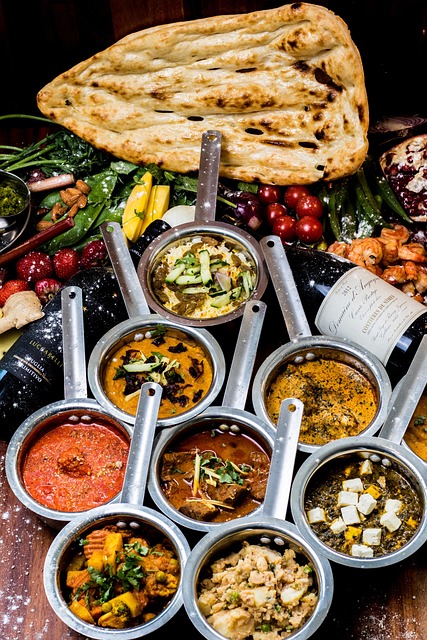In this article:
- Gluten is a protein in grains like wheat, barley, and rye.
- It’s safe for most people, but it can cause harm or symptoms in people with celiac disease, gluten ataxia, and gluten sensitivity.
- Many people without these conditions choose to follow a gluten-free diet because they hope it will increase weight loss or energy levels.
- Many grain products like wheat bread, pasta, crackers, cereals, and baked good have gluten. Many processed foods also have gluten-containing ingredients.
- Corn, gluten-free oats, rice, sorghum, and amaranth are grains without gluten. Fruit, vegetables, meats, legumes, poultry, seafood, nuts, and fats are also naturally gluten-free. Check labels to be sure products are gluten-free.
- Whole grains, iron, fiber, B vitamins, and other nutrients are often low on a gluten-free diet.
- Ask your healthcare provider before going on a gluten-free diet, or if you have any health concerns.
- Lark can provide coaching 24/7 and help you follow a personalized meal plan to achieve health and weight goals.
Gluten-free diets have become trendy. Gluten-free products are on nearly every store shelf and restaurant menu, but do you know what gluten is and which individuals should avoid it? Here’s what you need to know about a gluten-free diet, possible benefits and risks, and tips for following one safely. Be sure to talk to your healthcare provider before going gluten-free or making any other dramatic dietary changes, or if you have any concerns about your gastrointestinal or digestive health.
What Is Gluten?
Grains like wheat, barley, and rye are sources of a protein called gluten. Gluten is the most abundant starchy protein in wheat’s endosperm, which is the starchy portion of the grain kernel. When gluten mixes with water, it provides strength and elasticity, making it an ideal foundation for products like bread and other baked goods. While consuming gluten is safe for the majority of people, it can be harmful for some.
Medical Reasons to Avoid Gluten
Some people have conditions that require a gluten-free diet to avoid discomfort or danger.
- Celiac disease is an autoimmune condition in which gluten consumption triggers damage to the lining of the small intestine, leading to nutrient malabsorption and symptoms like gastrointestinal discomfort, fatigue, and joint pain.
- Gluten sensitivity causes similar symptoms, but there is not the same damage to the small intestine. Experts aren’t certain that gluten is the only culprit or always a culprit, but it’s a good idea to follow a gluten-free diet if your healthcare provider recommends it and it prevents symptoms.
- A wheat allergy is an allergic reaction, or immune response, to wheat. It’s not a response specifically to gluten, but avoiding gluten means you’re avoiding wheat, so a gluten-free diet can be a strategy for preventing exposure to a wheat allergen.
Gluten-Free Diet for Non-Medical Reasons
Food manufacturers and even the restaurant industry seem to be profiting, charging about 2-3 times as much for gluten-free products compared to their non gluten-free counterparts, but is gluten-free right for you?
Many people follow a gluten-free diet because they believe it will help with weight loss or health even though they don’t have a condition that doctors tend to treat with a gluten-free diet. According to an article in Diabetes Spectrum, though less than 1% of the population has a diagnosis of celiac disease, 30% of the population has expressed interest in a gluten-free diet. There isn’t data to prove benefits of a gluten-free diet for weight loss or other reasons without a medical necessity.
Foods to Avoid on a Gluten-Free Diet
To follow a gluten-free diet, it’s important to know which foods have gluten. Wheat, barley, and rye, and products that contain them, have gluten.
Some products with gluten may be easier to spot than others. For example, you might expect that wheat bread, rye bread, and soup with barley have gluten. Traditional pasta and egg noodles, pancakes, and many breakfast cereals, like shredded wheat and bran flakes, also have wheat and gluten. In addition, wheat is a main ingredient in many snack foods and baked goods like many croutons, crackers, cookies, pretzels, cakes, and pies.
Other sources of gluten may be less easy to spot. Many processed foods contain gluten because they have wheat, barley, or rye as an ingredient. Here are examples of products that often have wheat or gluten in them.
- Many veggie burgers, meatless hot dogs, and other meat substitutes, including tempeh and seitan
- Processed meats like sausages or deli meats
- Canned or jarred soups, broths, and sauces
- Frozen or boxed meals or sides with sauces, like broccoli and cheese sauce
- Beer and malt
- Condiments like soy sauce and dressings
If you’re on a strict gluten-free diet, it’s important to never assume that a particular item is gluten-free.
Gluten-Free Foods
Many foods, including some types of grains, are naturally gluten-free.
Here are some gluten-free grains.
- Rice
- Quinoa
- Millet
- Oats (if labeled “gluten-free”)
- Corn
- Amaranth
- Buckwheat
- Sorghum
- Teff
Flours and products derived from the above grains are also gluten-free. For example, rice flour, rice and corn squares cereal, puffed amaranth, cornmeal, popcorn, and buckwheat pancakes are gluten-free (as long as they are labeled as such).
These other foods are also gluten-free.
- Potatoes
- cassava (tapioca)
- Soy
- Plain fresh, frozen, and canned starchy and non-starchy vegetables.
- Meat, poultry, eggs, beans, lentils, split peas
- Plain dairy products like milk, cheese, plain yogurt, and butter (check the label on any packaged product)
- Plain peanuts, nuts, and seeds
- Oils and fats like butter, olive oil, canola oil, and flaxseed oil
- Water, black coffee, plain tea
If you need to avoid gluten entirely, it’s important to make sure you obtain these foods in an environment that’s gluten-free to avoid the possibility of cross contamination.
Here are some tips for making a gluten-free diet easier to follow.
- Substitute gluten-free flours like brown rice flour, bean flour, or almond flour for wheat flour
- Use cornstarch or tapioca instead of wheat flour for thickening sauces and gravies
- Eat gluten-free oatmeal and breakfast cereals instead of wheat-based ones
- Make your own salad dressings out of olive oil, an acid like vinegar or lemon juice, and herbs instead of purchasing storebought ones
- Choose unprocessed chicken and fish, vegetables, and fruit instead of processed foods
Using Labels to Identify Gluten-Free Foods
The Food and Drug Administration says that foods may have a “gluten-free” label if they meet one of these criteria.
- They’re naturally gluten-free like vegetables or fruit
- They don’t contain a gluten-containing grain like wheat, barley, or rye
- They are made with a gluten-containing ingredient like wheat, but they have been processed to contain less than 20 ppm (parts per million) of gluten.
“Gluten-free” foods can also be labeled “free of gluten,” “without gluten,” or “no gluten.”
It’s important to know that “no gluten ingredients” or “no gluten-containing ingredients" does not necessarily mean that there are fewer than 20 ppm of gluten.
Staying Nourished on a Gluten-Free Diet
Since a gluten-free diet eliminates a significant amount of common grain products, it's important to keep nutrition in mind. Fewer than half of women on a gluten-free diet met recommendations for calcium, fiber, and iron, according to an article published in the journal Nutrition. In addition, gluten-free products are often higher in calories, sodium, and trans fat than their gluten-containing counterparts, according to an article in Gastroenterology and Hepatology.
Here are some tips for good nutrition on a gluten-free diet.
- Read labels of gluten-free products to see if their main ingredients include low-nutrient items like potato starch or white rice flour. stead of flour, or cereal may be white rice
- Look for products made from whole grains like brown rice and gluten-free oats to achieve recommendations to get at least half your grains from whole-grain sources, since an article in Diabetes Spectrum states that people on gluten-free diets are less likely to get enough whole grains
- Eat a variety of nutritious foods to get enough nutrients like iron and B vitamins, which are in fortified and enriched products made with wheat flour
Always talk to your healthcare provider when you're on a special diet to make sure it's safe and healthy for you.
Here’s a one-week meal plan to try.
How Lark Can Help
A balanced and nutritious diet can help you improve heart health, lose weight, and manage or prevent chronic conditions. Lark can help you make positive choices on a daily basis. Your Lark coach is available 24/7 for encouragement, nutrition and physical activity coaching, and habit tracking. Lark can help you make healthy choices and establish habits that fit into your lifestyle so you can lose weight and keep it off with or without GLP-1 medications.
Click here to see if you may be eligible to join Lark today!











.webp)








